Fishing knots are an essential component of any fishing trip. The right knot can mean the difference between a successful catch and a missed opportunity. Many different types of knots can be used for various fishing situations, from tying on hooks to securing lines to reels.
Fishing is a great way to escape daily life’s hustle and bustle. It is an activity that requires patience, skill, and the right equipment. One of the most important skills that every angler needs to learn is how to tie fishing knots. It can be daunting, but with the right tools and guidance, it’s easy to master.
We will cover all aspects of tying fishing knots. We’ll get you covered with the tools you need to choose the right bait for your trip. Whether you are left-handed or right-handed, we will provide tips on how to tie knots like a pro. So if you want to improve your fishing skills, read on.
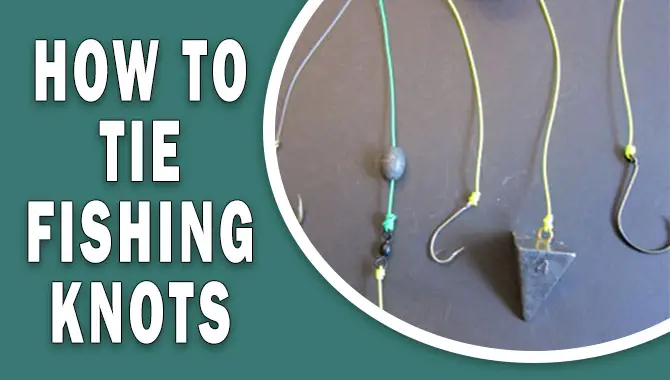
Tools For Tying Fishing Knots
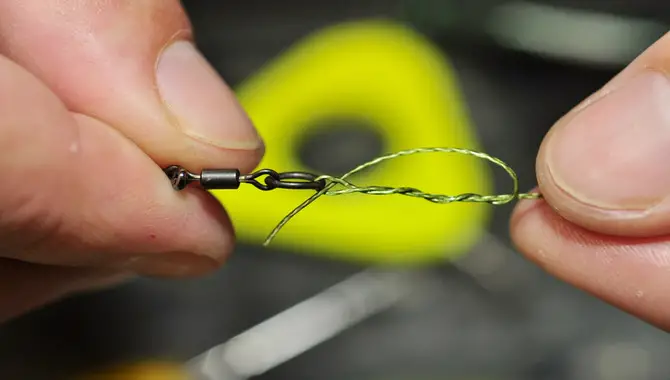
When it comes to tying fishing knots, having the right tools can make all the difference. Some of the most essential tools for this task include a pair of pliers, a knot-tying tool, and a hook remover. You can use pliers to grip and twist lines during knot tying.
While a knot-tying tool can help create perfect knots every time. Hook removers are also important for safely removing hooks from fish without causing injury or damage. Other useful tools for tying fishing knots include scissors or nail clippers for cutting lines and braiding needles for threading lines through small spaces.
It’s important to choose high-quality tools designed specifically for fishing. As they will be more durable and effective in the long run. With the right tools at your disposal, you’ll be able to tie strong and reliable knots with ease, ensuring that your fishing trips are successful and enjoyable.
6 Easy Effective Ways How To Tie Fishing Knots
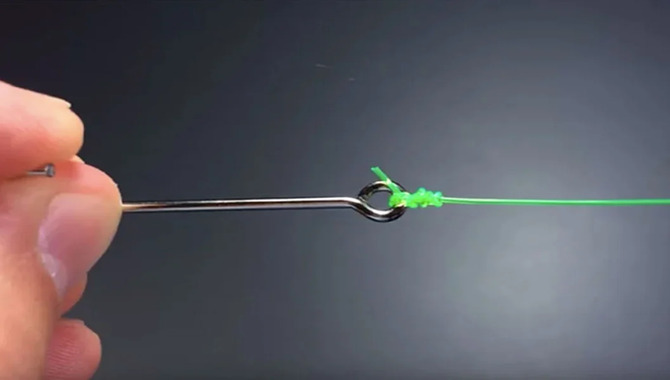
If you’re looking to learn how to tie fishing knots, you have several options available that are both easy and effective. One such option is the Improved Clinch Knot, which is versatile and works well when tying hooks, swivels, and lures.
Another great knot is the Palomar Knot; this knot is ideal for attaching the braided line to your hook or lure. If you’re looking for an easy-to-tie knot that works with mono and braided lines. The Uni Knot is an excellent choice. The Blood Knot may also be the best option if you need to join two different fishing lines of similar diameters.
For those who need to tie two lines with different diameters together, look no further than the Surgeon’s knot. Finally, if you need to attach leader material to your mainline or join two lines of unequal diameter, consider using the Double Uni Knot.
1. Palomar Knot
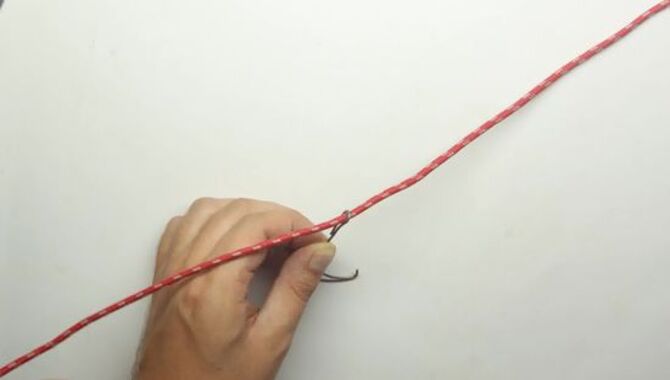
The Palomar knot is a popular and reliable fishing knot. That is used to attach the fishing line to a hook or lure. To tie the Palomar knot, start by doubling up your fishing line and passing it through the eye of the hook. Tie an overhand knot with the doubled line, but don’t tighten it all the way.
Next, take the loop end of the doubled line and pass it over the hook and back towards the mainline. Finally, pass the hook through the loop you created and pull both ends of the line to tighten the knot. The result is a strong and secure knot that can hold up against even large fish. With practice, tying a Palomar knot can become second nature for any angler looking to improve their fishing game.
2. Uni Knot
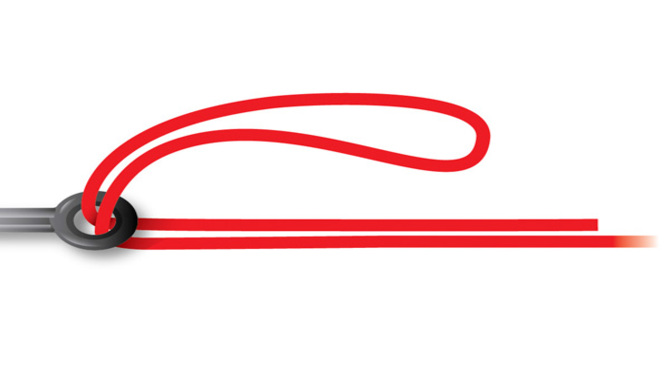
The Uni Knot is versatile and can be used for various fishing applications. It is particularly useful for attaching the line to the hook or lures, as well as for connecting two lines together. To tie the Uni Knot, start by passing the line through the eye of the hook or lure.
Take the tag end of the line and make a loop around the standing line, then pass it through the loop and wrap it around both lines five times. Next, pass the tag end back through the loop, then tighten the knot by pulling on both ends of the line. The Uni Knot is easy to tie and has a high level of strength, making it a popular choice among anglers of all skill levels.
3. Improved Clinch Knot
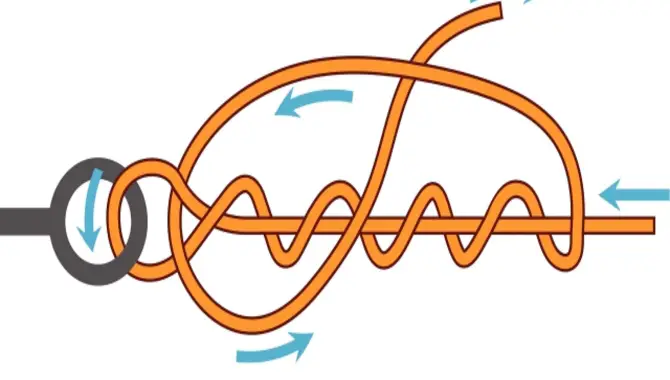
The Improved Clinch Knot is a popular fishing knot that is popular for its reliability and strength. This knot is perfect for attaching lures, hooks, or swivels to your fishing line. You can easily tie the Improved Clinch Knot and use it with a variety of different types of lines, including monofilament and fluorocarbon. To tie the knot, simply thread the line through the eye of your hook or lure, then make five or six wraps around the standing line.
Next, pass the tag end through the small loop you created when you first passed the line through the eye of the hook. Finally, moisten the knot with water or saliva and pull it tight. With its simplicity and strength, it’s no wonder why so many anglers choose to use the Improved Clinch Knot when they’re out on the water.
4. Albright Knot
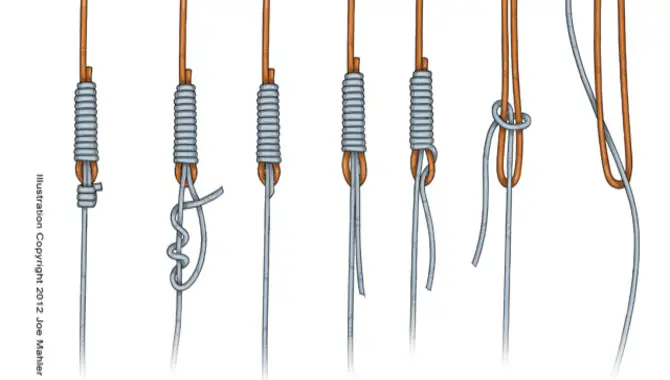
The Albright Knot is a popular fishing knot that joins two lines of different diameters or materials. People commonly use it to attach a leader of the fluorocarbon to a main line. The angler uses monofilament to make the main line from a braided fishing line. To tie an Albright Knot, start by doubling over the end of your leader line and looping it around the main line.
Then, wrap the leader line around both strands of the loop you created and make several wraps back towards the tag end. Finally, pass the tag end through the loop you created and pull it tight while keeping tension on both lines. With practice, any angler can quickly and securely tie his knot, making it a valuable addition to his skill set.
5. Surgeon’s Knot
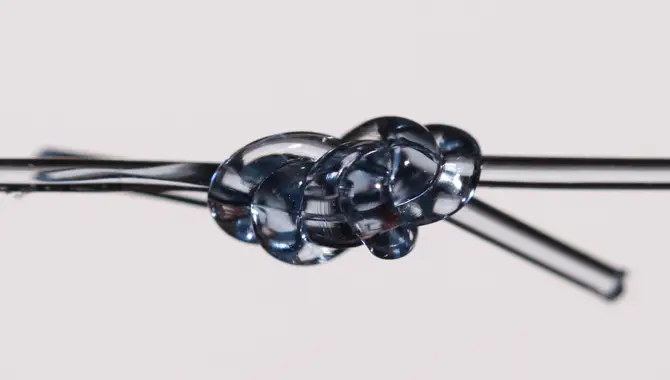
The Surgeon’s Knot is a popular knot used in fishing, often recommended for attaching two lines of differing diameters. To tie the Surgeon’s Knot, start by overlapping the two lines you wish to join. Take one end of each line and form a simple knot by wrapping one around the other and pulling it tight.
Then, take the tag end of each line and repeat the knotting process, but this time wrap each around both lines before pulling tight. This creates a double overhand knot that is both strong and reliable. Make sure to moisten the knots with water or saliva before tightening to prevent friction damage to the fishing line. With practice, tying the Surgeon’s Knot will become second nature and give you confidence in your fishing tackle setup.
How To Choose The Right Bait For Your Fishing Trip

Choosing the right bait for your fishing trip is essential to maximize your chances of success. Different types of fish are attracted to different types of bait, so it’s important to do some research and consider the environment you’ll be fishing in. Live bait, such as worms or minnows, can effectively attract a wide variety of fish.
Artificial lures, on the other hand, can be more specialized and mimic specific types of prey that certain fish are known to feed on. Additionally, consider the time of day you’ll be fishing and the weather conditions. Some fish may be more active during certain times of the day or under certain weather conditions. Choosing the right bait can increase your chances of catching your desired fish species and having a successful fishing trip.
Bass Fishing – Best Rigs For Catching Big Bass

When it comes to bass fishing, choosing the right rig can make all the difference in catching big bass. Two popular rigs for catching big bass are the Texas and the Carolina rig. The Texas rig is a versatile setup that works well in most situations. To tie this rig, start by sliding a bullet weight onto your line, followed by a worm hook. Next, thread your bait onto the hook and bury the point of the hook into the bait.
The Carolina rig is another effective option for catching big bass. This rig has a sliding sinker, swivel, leader line, and hook. To tie this rig, start by tying a swivel onto your main line. Then, attach a leader line to the other end of the swivel and tie on your hook. Finally, add your sinker to the main line above the swivel. With these rigs and some practice tying fishing knots like the Palomar knot or Uni knot, you’ll reel in big bass in no time.
How To Spool A Reel With Monofilament Line

Spooling a reel with a monofilament line is a simple process that can be done in just a few steps. First, attach the spool of line to the reel by tying a knot or using a specialized attachment. Next, run the line through the guides on the rod and tie it to the reel spool using an arbour knot.
Then, slowly turn the reel handle while holding tension on the line to ensure it winds evenly onto the spool. Continue spooling until you have filled the spool to your desired level, leaving about 1/8 inch of space between the line and the lip of the spool. Finally, trim any excess line, and you’re ready to hit the water! With these simple steps, you can easily and efficiently spool your reel with a monofilament line for your next fishing adventure.
Is There A Difference Between Right And Left-Handed Ways Of Tying Fishing Knots?
When it comes to tying fishing knots, there may be a difference in technique between right and left-handed individuals. While the basic steps for tying most fishing knots remain the same. The way in which you hold and manipulate the line may vary depending on your dominant hand.
For example, a right-handed person may find it easier to hold the line in their left hand and manipulate it with their right hand. Whereas a left-handed person may prefer the opposite. The important thing is to find a comfortable and effective method that works for you, regardless of whether you are right or left-handed. With practice and patience, you can master the art of tying fishing knots and enjoy a successful day on the water.
Conclusion
Fishing knots are an essential skill for any angler. There are many different fishing knots to choose from, each with its own benefits and uses. The improved clinch knot is another commonly used knot that is perfect for tying on leaders and tippets. Mastering the art of fishing knots is essential for any angler.
You can easily tie strong, reliable, and efficient knots with the right tools and techniques. Whether you’re a seasoned pro or just starting, our detailed guide on how to tie fishing knots will help you hone your skills and take your fishing game to the next level. We’ve got you covered, from choosing the right bait to spooling a reel with a monofilament line. Start tying those knots today, and prepare for your next big catch.
Frequently Asked Questions
Do You Want To Know All The Types Of Fishing Knots That Exist?
Learning about the various fishing knots is essential for becoming a versatile angler. The most commonly used fishing knots include the Palomar, improved clinch, and uni knot. However, many others exist to explore, such as the blood knot, surgeon’s knot, and double uni knot. Each serves a specific purpose.
What Are The Benefits Of Tying Fishing Knots?
Tying fishing knots is crucial for securely attaching your line to your hook or lure, increasing the chances of landing a fish and providing versatility in fishing techniques. Proper knot tying also saves money by allowing gear to be reused instead of frequently replaced.
Which One Is Better: Loop Knot Or Square Knot?
The knot you choose for fishing depends on the situation. A loop knot is ideal for lures that need a natural swimming action, while a square knot is better for joining two lines of similar size. Experiment with both to find what works best for your specific needs.
Which Fishing Knots Are Commonly Used By Anglers?
Anglers commonly use the Palomar knot for hooks and lures, the improved clinch knot for attaching line to lure or hook, the blood knot to join lines, and the double uni knot for joining lines or hooks/lures. These knots are easy to tie and versatile in their applications.
How Does Tying Fishing Knots Help My Fishing Skills?
Properly tying fishing knots ensures your bait or lure stays attached to the line, increasing the chances of catching fish. Different knots suit different types of fishing, saving time and money by preventing lost lures or broken lines. Practice knot-tying to improve overall fishing skills and become a more successful angler.

Aquarium passion is all about connecting with the aquatic life and providing education to the public on the importance of these creatures. We showcase a wide variety of marine life through our exhibits as well as working with schools to provide unique learning opportunities for students of all ages.









